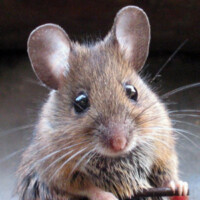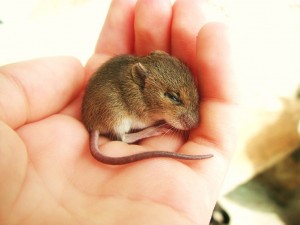The Mouse Monk

You’ve heard of the mouse man I expect. If you watch programmes on antiques his name is mentioned from time to time. Whatever he made, a chair, a table, a piece of ecclesiastical furniture, he would always carve a mouse on it somewhere. But he wasn’t the first craftsman to do this. Be a time traveller. Small as a moth you are, that finds its way into the cloisters of a great Norman cathedral, to watch those who carve the first decorations on the dressed stone where no decoration has been before. There was a mouse man then too, or rather a mouse monk. You are a moth remember. You are a small yellow moth so when you alight on the creamy Caan stone you are invisible. You choose a column in the cloisters where the monk Brother Thomas is working on a summers day. There are swifts and swallows crowding round the tower shrilling as they twist and turn after flies in the upper currents. A small bell is tolling for service. Monks troop through the cloisters as they do many times a day for the offices, footsteps echoing, bell ringing, then the slam of a door and the distant sound of chanting. Brother Thomas the mason is chipping stone, his chisel at an angle, his wooden mallet taking the blows and wearing a hole in it. He is carving a rose for the cloisters working on a petal, shaping it stroke by stroke. The stone is soft and willing, it crumbles as he cuts it and the crumbs lie all around him the colour of cheese. And round his feet there is movement. A brown mouse sits on its haunches, watching. Brother Thomas pauses and wipes his forehead. He stoops and lays his hand on the ground. The mouse hops onto it and he picks it up. He watches it and smiles, then puts it in his sleeve where it runs up inside. The cloth ripples as the mouse runs to his shoulder and sits there, just another fold. Brother Thomas continues to work and now he sings along with the chant. There is the rhythm of his hammering, the echo of it in the stone vaults and the sound of his voice.
Now it is winter. You are not a moth anymore, the moths are hibernating in crevices. Now you are a mouse. A careful mouse because there is a cloister’s cat that the monks feed and it sleeps on the stone bench on a piece of folded cloth. From your perch on a carved flower, you see the young monk lead the old monk to a work bench in a corner of the cloisters. There is a treacherous wind which lifts the monks’ robes exposing cold feet. The young monk places a blanket around the knees of the old monk and with his own hand, he lifts the hand on which the veins stand out and places it on the block of wood. The old man feels for the chisels on the table and selects the one he wants by groping. The young monk leaves him now and pads away down the stone pathway and in through a door into the cathedral. The old monk smiles as he begins chipping the wood, forming a creature, a little animal he knows by heart.
It is a long time now since Brother Thomas lost his sight. At first a stone chip lodged in one eye and then an infection festered and then the infirmity of great age clouded both eyes, the bad and the good, with a layer of milky opaqueness through which no light could penetrate. But his hands do not need eyes to see to carve. He uses fruit wood and makes small things he feels into shape with his fingers. Since his blindness he mostly carves mice. His pet mouse is long gone but for ever he knows the structure of its bones, the lie of its ears, the way its tail hones to a point, and the proportion of tail to body. He remembers the friendliness of his particular mouse and how it liked to be stroked. He strokes with the chisel and brings each new mouse to life till he can feel the heart racing in the rib cage and the breath of his lungs in and out. All round this cathedral, his mice are placed, on screens, hidden away on misericords, on a reredos. They amuse the observant and cause a smile. And you too, time traveller, hiding in the carved rose that Brother Thomas carved in his youth, one of a thousand such carvings made to praise God, you too smile. For this cathedral is not just to the Glory of God. It celebrates the tiniest and humblest of His creatures and all because of the mouse monk.





Recent Comments